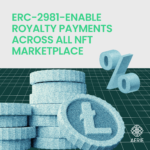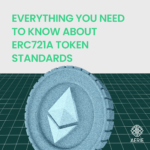Exploring the Concept of Utility NFTs
NFTs burst onto the scene in 2021 with a $70 million art auction that captured the attention of the entire world. While most NFTs are used for collectibles, art, and other types of media, a new type of NFT has emerged that serves a different purpose: the utility NFT.
Now, experts wonder if utility NFTs are the next giant leap forward for this exciting technology. In 2020, the total trading volume of NFTs was $200 million, but by the first quarter of 2022, that number had skyrocketed to over $12 billion. With such explosive growth, it’s no wonder that people are talking about the possibilities for utility NFTs.
So, what is a utility NFT?
Firstly, utility NFTs are a type of NFT — but instead of just being for show, they actually do stuff. Unlike traditional NFTs, which are usually limited to collectibles and art, utility NFTs can serve a practical purpose. They can be anything from virtual real estate to access to exclusive content, in-game items, or even tickets to an event.
A couple of NFT projects, such as Bored Ape Yacht Club (BAYC) and Doodles, started off as fancy art you could collect, but then they added special perks for owners. For example, if you have one of these NFTs, you can get invited to private parties or special meetups. Other NFT projects, like Coachella Collectibles, offer utility right from the start. With Coachella Collectibles, you can get a lifetime pass to the famous music festival, as well as other cool stuff like exclusive experiences and physical swag.
Real-world use cases
In our previous article, Beyond Just Art: Real-world NFT Use Cases, we discussed how NFTs are increasingly used in various fields. They are being explored to streamline transactions and authenticate ownership in fields such as medical records, real estate, patents and intellectual rights protection, ticketing, music, fashion, and identity verification. NFTs are expected to offer greater transparency and security in transactions, and their use is likely to grow in the coming years.
We also discussed ticketing in NFT Tickets for Live Events: A Look into the Future. That is another example of a utility NFT. When you buy a ticket as an NFT, it’s verified on the blockchain, making it virtually impossible to counterfeit. Additionally, the ticket can be transferred easily and securely between owners, eliminating the need for paper tickets or physical passes. The best part is that it can stop scalpers or fraudsters from doing their thing since you can easily track who owns the ticket and where it came from.
Conclusion
As the NFT market continues to grow and evolve, utility NFTs are emerging as a new and exciting area of exploration. These types of NFTs offer practical uses beyond just being collectibles or art pieces. From virtual real estate to exclusive access to events and experiences, utility NFTs have the potential to revolutionize a wide range of industries.
As the technology continues to mature, it will be interesting to see what new and innovative use cases emerge for utility NFTs and how they can continue to transform the way we interact with digital assets.









